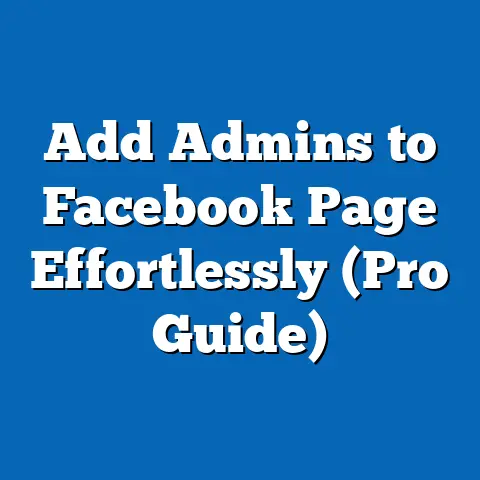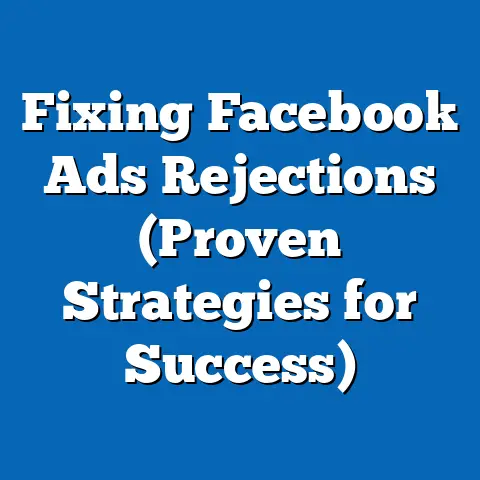Unlock Facebook on Google (Essential Guide for Users)
Would you rather have seamless access to Facebook from any Google device without restrictions, or continue dealing with access issues every time you log in? I know my answer! In today’s digital age, Facebook has become an integral part of our lives. Whether it’s connecting with loved ones, staying updated on current events, or even promoting your business, the platform’s reach is undeniable. But what happens when you encounter frustrating access restrictions while trying to use Facebook through your Google account or device?
I’ve been there. Remember that time I was trying to post a crucial update for my business page while traveling, only to be blocked due to a suspected “unusual login”? Talk about stressful! That experience made me realize the importance of understanding how to navigate these roadblocks.
This guide is designed to equip you with the knowledge and tools to unlock Facebook on Google, ensuring you can access your favorite social platform without unnecessary hurdles. We’ll explore common issues, step-by-step solutions, and best practices to keep you connected, no matter where you are or what device you’re using. Let’s dive in!
Understanding the Basics of Facebook Access
So, what exactly does it mean to “access Facebook through Google”? Simply put, it refers to using a Google-powered device (like an Android phone or Chromebook) or Google’s Chrome browser to connect to Facebook’s website or app. It’s the everyday way most of us interact with the platform.
However, the connection isn’t always seamless. Several factors can contribute to access restrictions:
- Geographical Restrictions: Some countries or regions might have specific regulations or censorship policies that limit access to certain websites, including Facebook.
- Account Issues: Facebook might restrict access if it detects suspicious activity, such as multiple login attempts from different locations or violations of its community standards.
- Browser Settings: Security settings or browser extensions can sometimes interfere with Facebook’s functionality, leading to access problems.
- Network Restrictions: Schools, workplaces, or public Wi-Fi networks might implement firewalls or filters that block access to social media sites.
Consider this: Facebook boasts nearly 3 billion active users worldwide (Statista, 2024). A significant portion of these users rely on Google’s ecosystem for their daily online activities. This makes understanding and resolving access issues a crucial skill for anyone who wants to stay connected.
Key Takeaway: Accessing Facebook through Google is a common practice, but various factors can lead to frustrating restrictions. Understanding these factors is the first step towards unlocking your access.
Common Issues When Accessing Facebook on Google
Let’s get specific. What are the common issues you might encounter when trying to unlock Facebook on Google? Here are some of the most frequent culprits:
- Account Suspensions or Bans: This is probably the most dreaded scenario. Facebook might suspend or ban your account if it suspects policy violations, such as spamming, using fake profiles, or engaging in hate speech.
- My Experience: I once had a client whose account was temporarily suspended because they accidentally triggered Facebook’s spam filters by posting the same promotional message in multiple groups within a short period. A simple appeal and a commitment to follow best practices resolved the issue, but it was a nerve-wracking experience.
- Browser Incompatibility Issues: Older browsers or those with outdated plugins might not fully support Facebook’s features, leading to display errors, slow loading times, or even complete access denial.
- Network Restrictions (e.g., at schools or workplaces): Many institutions and companies block social media sites to prevent distractions and improve productivity. While understandable, it can be frustrating when you need to access Facebook for legitimate reasons.
- Device-Specific Problems: Sometimes, the issue is specific to your device. An outdated operating system, a corrupted app installation, or a device with limited storage can all contribute to access problems.
- Cookie and Cache Issues: Over time, your browser accumulates cookies and cached data. These can sometimes become corrupted or outdated, leading to conflicts with Facebook’s website and preventing proper loading.
- My Experience: I once had a client whose account was temporarily suspended because they accidentally triggered Facebook’s spam filters by posting the same promotional message in multiple groups within a short period. A simple appeal and a commitment to follow best practices resolved the issue, but it was a nerve-wracking experience.
Key Takeaway: Identifying the specific issue you’re facing is crucial for finding the right solution. Whether it’s an account problem, a browser issue, or a network restriction, understanding the root cause will guide you towards the most effective fix.
Steps to Unlock Facebook on Google
Now for the good stuff – the actionable steps you can take to unlock Facebook on Google. I’ve broken it down into a clear, step-by-step guide:
Step 1: Checking Your Internet Connection
A stable internet connection is the foundation for accessing any online platform, including Facebook. Here’s how to troubleshoot common connection issues:
- Verify Your Connection: Make sure you’re connected to a Wi-Fi network or have a stable cellular data signal.
- Restart Your Router: This is the age-old advice, but it often works! Unplug your router for 30 seconds, then plug it back in. Wait for it to fully reboot.
- Run a Speed Test: Use a website like Speedtest.net to check your internet speed. If your speed is significantly lower than your plan’s advertised speed, contact your internet service provider.
- Check for Outages: Visit your internet service provider’s website or social media pages to see if there are any reported outages in your area.
Why This Matters: A weak or unstable internet connection can cause Facebook to load slowly, display errors, or even fail to load altogether.
Next Step: If your internet connection seems fine, move on to Step 2.
Step 2: Clearing Browser Cache and Cookies
Clearing your browser’s cache and cookies is like giving it a fresh start. Here’s how to do it in popular browsers:
- Google Chrome:
- Click the three dots in the top-right corner.
- Go to “More tools” > “Clear browsing data.”
- Select “Cached images and files” and “Cookies and other site data.”
- Choose a time range (e.g., “All time”) and click “Clear data.”
- Mozilla Firefox:
- Click the three horizontal lines in the top-right corner.
- Go to “Settings” > “Privacy & Security.”
- In the “Cookies and Site Data” section, click “Clear Data.”
- Select “Cookies and Site Data” and “Cached Web Content” and click “Clear.”
- Microsoft Edge:
- Click the three dots in the top-right corner.
- Go to “Settings” > “Privacy, search, and services.”
- Under “Clear browsing data,” click “Choose what to clear.”
- Select “Cookies and other site data” and “Cached images and files.”
- Choose a time range (e.g., “All time”) and click “Clear now.”
- Click the three dots in the top-right corner.
- Go to “More tools” > “Clear browsing data.”
- Select “Cached images and files” and “Cookies and other site data.”
- Choose a time range (e.g., “All time”) and click “Clear data.”
- Click the three horizontal lines in the top-right corner.
- Go to “Settings” > “Privacy & Security.”
- In the “Cookies and Site Data” section, click “Clear Data.”
- Select “Cookies and Site Data” and “Cached Web Content” and click “Clear.”
- Click the three dots in the top-right corner.
- Go to “Settings” > “Privacy, search, and services.”
- Under “Clear browsing data,” click “Choose what to clear.”
- Select “Cookies and other site data” and “Cached images and files.”
- Choose a time range (e.g., “All time”) and click “Clear now.”
Why This Matters: Cookies and cached data can become corrupted or outdated, causing conflicts with Facebook’s website. Clearing them forces your browser to download the latest versions of the site’s files, potentially resolving access issues.
Next Step: After clearing your cache and cookies, restart your browser and try accessing Facebook again. If the problem persists, proceed to Step 3.
Step 3: Adjusting Browser Settings
Sometimes, your browser’s security settings or extensions can interfere with Facebook’s functionality. Here’s how to adjust them:
- Check Privacy Settings: Make sure your privacy settings aren’t blocking cookies or JavaScript, which are essential for Facebook to function properly.
- Disable Extensions: Browser extensions can sometimes cause conflicts. Try disabling them one by one to see if any of them are interfering with Facebook.
- Enable Cookies: Ensure that cookies are enabled in your browser settings. Facebook relies on cookies to track your login status and preferences.
Why This Matters: Overly restrictive privacy settings or conflicting extensions can prevent Facebook from loading correctly or functioning as intended.
Next Step: Adjust your browser settings as needed and try accessing Facebook again. If you’re still facing issues, move on to Step 4.
Step 4: Using a VPN or Proxy
A VPN (Virtual Private Network) or proxy server can help bypass geographical restrictions and enhance your privacy. Here’s how they work:
- VPN: A VPN encrypts your internet traffic and routes it through a server in a different location, masking your real IP address and making it appear as if you’re browsing from that location.
- Proxy: A proxy server acts as an intermediary between your device and the internet, forwarding your requests through its own IP address.
Recommendations:
- ExpressVPN: A popular and reliable VPN service with servers in numerous countries.
- NordVPN: Another reputable VPN provider known for its strong security features.
- Surfshark: A budget-friendly VPN option that still offers good performance.
Important Note: While VPNs and proxies can be helpful, be cautious when choosing a provider. Some free services might collect your data or inject ads into your browsing sessions. Always opt for reputable providers with clear privacy policies.
Why This Matters: If you’re traveling to a country with Facebook restrictions or suspect that your internet service provider is blocking access, a VPN or proxy can help you bypass these limitations.
Next Step: Choose a VPN or proxy service, connect to a server in a location where Facebook is accessible, and try accessing the platform again. If the issue persists, proceed to Step 5.
Step 5: Resetting Your Facebook Password
If you suspect that your account has been compromised or locked, resetting your password is a crucial step. Here’s how:
- Go to the Facebook login page and click “Forgot password?”
- Enter the email address or phone number associated with your account.
- Follow the instructions to reset your password via email or SMS.
- Choose a strong, unique password that you haven’t used before.
Why This Matters: A compromised account can lead to access restrictions or even a permanent ban. Resetting your password helps secure your account and regain control.
Key Takeaway: These five steps cover a wide range of potential issues and solutions. By systematically working through them, you should be able to unlock Facebook on Google in most cases.
Alternative Methods to Access Facebook
Sometimes, the traditional route just doesn’t cut it. Here are some alternative methods you can use to access Facebook:
- Using Facebook Lite: Facebook Lite is a lightweight version of the app designed for users with slower internet connections or limited data plans. It consumes less data and resources, making it a good option if you’re struggling to load the full version of Facebook.
- Mobile Apps: The Facebook app for iOS and Android is often more reliable than accessing the platform through a mobile browser. It’s optimized for mobile devices and can provide a smoother user experience.
- Third-Party Browsers: Some lesser-known browsers, such as Brave or Opera, come with built-in VPNs or ad blockers that can enhance your privacy and bypass restrictions.
Why This Matters: These alternative methods provide flexibility and can be especially useful in situations where traditional access is problematic.
Best Practices for Maintaining Access to Facebook
Unlocking Facebook is one thing, but keeping it unlocked is another. Here are some best practices to help you maintain seamless access in the long run:
- Regularly Update Browser Software: Keep your browser up to date to ensure compatibility with the latest web standards and security protocols.
- Monitor Account Activity for Suspicious Behavior: Regularly check your Facebook activity log for any unusual logins or posts. If you notice anything suspicious, change your password immediately and report it to Facebook.
- Stay Informed About Facebook’s Policies and Updates: Facebook’s policies and algorithms are constantly evolving. Staying informed about these changes can help you avoid accidental violations that could lead to account restrictions.
- Use Strong, Unique Passwords and Enable Two-Factor Authentication: Protect your account with a strong, unique password and enable two-factor authentication for an extra layer of security.
My Personal Tip: I always recommend setting up two-factor authentication. It might seem like an extra step, but it adds a significant layer of protection against unauthorized access.
Key Takeaway: Proactive measures are essential for maintaining long-term access to Facebook. By following these best practices, you can minimize the risk of encountering future access restrictions.
Conclusion
Unlocking Facebook on Google can sometimes feel like navigating a maze, but with the right knowledge and tools, it’s definitely achievable. In this guide, we’ve covered the basics of Facebook access, common issues users face, step-by-step solutions, alternative methods, and best practices for maintaining seamless access.
Remember, uninterrupted access to Facebook is crucial for both personal and professional use. Whether it’s staying connected with friends and family, managing your business page, or simply staying informed, Facebook plays a significant role in our daily lives.
So, go ahead and follow the steps outlined in this article. I’m confident that you’ll be able to unlock Facebook on Google and enjoy uninterrupted access to your favorite social platform, anytime you need it.






